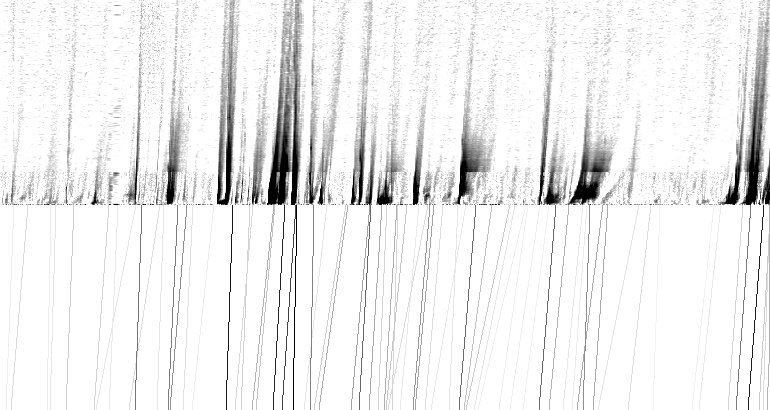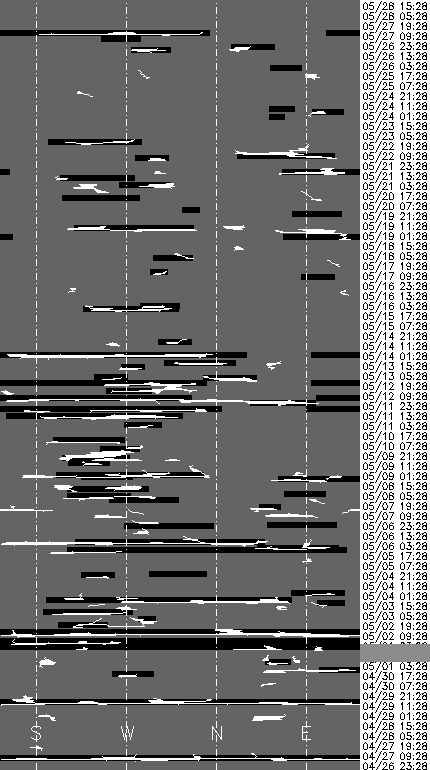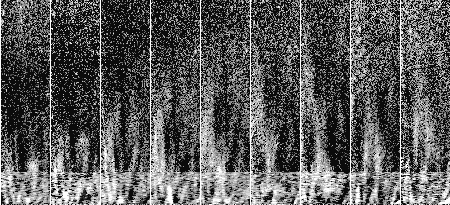We have developed software that autonomously detects coronal mass ejections (CMEs) in image sequences from LASCO. The output of our software is a list of events, similar to the classical catalogs, with principle angle, angular width and velocity estimation for each CME. In contrast to catalogs assembled by human operators, these CME detections by software can be faster, which is especially important in the context of space weather, and possibly also more objective, as the detection criterion is written explicitly in a program. About 75 % of the catalog CMEs are recovered by the software. Since our software also found CMEs that were previously unreported in the humanly assembled catalogs, we prove that also these catalogs do not have a 100 % success rate.
The method
CMEs can be seen in [height, time] plots (Fig. 1, top) as inclined ridges with the inclination angle corresponding to the propagation speed. Time runs horizontally over May, 1998, the vertically height covers the combined C2/C3 FOV. The ridges are detected with the Hough transform (Fig. 1, bottom).
By combining the ridges in [height,time] plots from all directions, one can reconstruct the CME front as it propagates outwards. The red lines in Fig. 2 track the front of a fast halo CME (right) and a slow, regular CME (left). The blue and yellow lines correspond to the position of the front at earlier and later times, giving an indication of the time evolution.


Figure 2: Examples of detected CMEs (red line): a slow, regular CME (left) snd a fast halo CME (right).
Validating the performance
|
In this combined map we show the 95 events found by the software (white) as compared to the 71 CMEs reported in the catalogs (green). Time is running vertically over May, 1998. The horizontal dimension is the poloidal angle around the sun, the left side corresponding to the C3 occulter. The software reproduces 27 % of the catalog CMEs with nearly identical time of appearance and angular location. Allowing for some tolerance on the time of appearance and on the angular span, the number of reproduced CMEs increases to 75 %. For space weather applications it is important to note that out of the 4 catalog halo CMEs, 2 are indeed reproduced as halo CMEs. The remaining 2 are missed because of a data gap. |
Unreported CMEs
The software discovers a substantial number of CMEs which are not included in the standard catalog. Some of these are due to a false alerts (e.g. detections triggered by corrupt images) or undesired splitting of events in time or space, but there are also true events, which have been missed by the operater for example because they were weak. However, the majority of all extra detections are small events (angular width < 40 degrees).
Main Conclusions
- Automated CME detection is possible.
- We recover about 75 % of the catalog CMEs. Improvements are under development.
- We detect weak, unreported CMEs which were missing in the catalogs.
Do you want to know more?
Read the full paper (PDF) corresponding to this website, or ask info via email.



